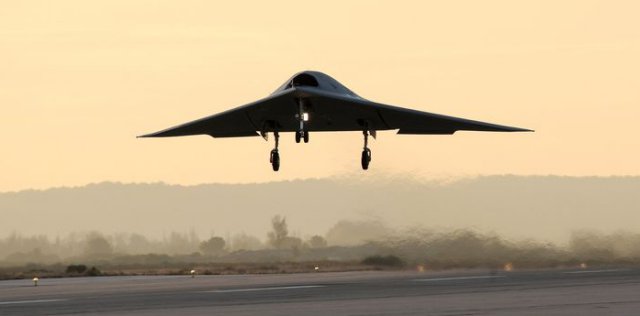 By 2022, the United States is projected to spend less than half the worldwide total on UAS research and development, as other countries — principally in Asia — step up production of own unmanned aircraft, according to a report by national security consulting firm Forecast International.
By 2022, the United States is projected to spend less than half the worldwide total on UAS research and development, as other countries — principally in Asia — step up production of own unmanned aircraft, according to a report by national security consulting firm Forecast International.
The report projects that research and development will account for $28.7 billion in worldwide spending over the next 10 years, about $11 billion of which will come from the United States. It predicts that the United States will continue to be the largest user of unmanned aircraft systems but that the U.S. acquisition market will experience a cooling period and “eventually settle at a lower level of activity.”
“As time passes, the percentage of overall development spending attributed to the United States will fall as other regions increase their UAS research budgets,” says the report, titled “The Market for UAV Reconnaissance Systems.”
The report predicts that the Pentagon will operate fewer of the high-flying war weapons in the years ahead and spend more on sophisticated technology to outfit its fleet, even as Europe and Asia move to become major proponents of UAS technology.
Major world powers are expected to have much larger drone fleets by 2022, and unmanned systems could make up 50 percent of the aircraft of some militaries by 2030, the data said.
The report, which is broken down by region, projects that research and development spending on UAS — a key indicator of acquisition trends — will reach about $5.2 billion by 2022 for Western European countries, including France, Italy and Britain. But it notes that fiscal considerations could limit those nations.
The largest increase in spending is expected to be among Asian nations, including China, Japan, South Korea, Indonesia and Thailand. Funding for drone research in Asia is expected to reach $7.7 billion, according to the report, which is based on ongoing research, media reports and other sources. It draws from financial information supplied by manufacturers or contained in government procurement documents.
Through the end of 2012, China built more than 1,560 UAS — some of which carry air-to-surface weapons and precision-guidance munitions, according to a separate Forecast International report that focuses on China’s unmanned aircraft production.
But Japan and other countries also have focused on building a small army of industrial-use helicopters for civilian and commercial priorities. The report notes that Kitanihon Skytech Corp. is slated to produce at least 770 unmanned helicopters, known as the Yamaha R-50, which can be employed for tasks such as crop dusting. Yanmar Helicopter Service will create about 427 of the small helicopters.
Meanwhile, South Korea is expected to produce a large batch of “suicide drones.”
The report shows that Korean Aerospace Industries is on track to build 258 UAS in the coming years. Some will be medium-altitude unmanned aircraft but, for the most part, the company will be focused on building 242 “suicide combat” Devil Killer drones, which are designed to travel long distances and hover until they receive a command to fly into the target area and detonate.
Taiwan’s domestic UAS development programme has produced tactical unmanned aircraft for its army, according to the data. The Taiwanese program is looking to develop armed drones over the next few years, but progress toward that goal has been slow — in part because of Taiwan’s inability to acquire foreign technologies, per the data.
Photo: nEUron – Remy Michelin
Source: Forecast International
